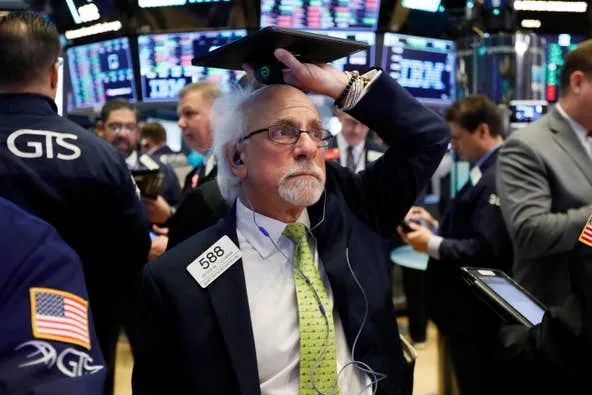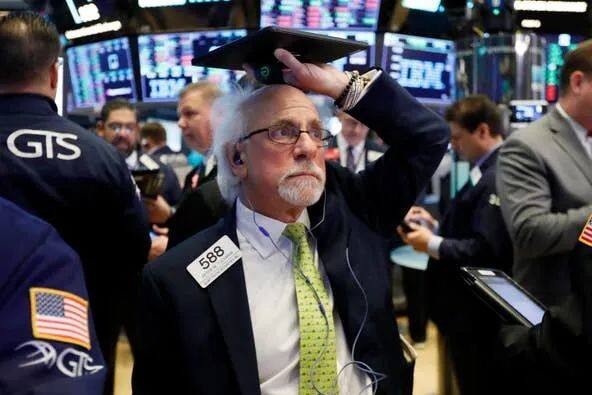Bidding farewell to the bleak year of 2022, the U.S. stock market made a strong rebound at the beginning of 2023. The three major stock indices all recorded gains in January – the S&P 500 index rose by 6.2%, marking the best January performance since 2019; the Dow Jones Industrial Average increased by 2.8%, and the Nasdaq Composite surged by 11%. However, the significant rise in the stock market resulted in billions of dollars in losses for short sellers within a month.

In 2022, short sellers reaped huge profits due to the stock market crash, but the rebound in the stock market in January overturned this trend. According to reports, as of Thursday, January 26, the index tracked by Goldman Sachs, which follows the 50 most heavily shorted stocks in the Russell 3000 index, has achieved a return of 15% this year, far exceeding the 6% increase of the S&P 500 index.
Ihor Dusaniwsky, Managing Director of Predictive Analytics at S3 Partners, said: “Investors who shorted stocks in January suffered a cumulative loss of $81 billion on their short positions.” This is in sharp contrast to the $300 billion profit accumulated in 2022.
Stocks that were severely hit in 2022 surged in January, especially growth stocks and technology stocks. The return on shorting Tesla’s stock in 2022 exceeded $15 billion. Tesla’s stock price plummeted by 65% in 2022, but it rose by more than 40% in January 2023 alone. Coinbase, which fell by more than 80% in 2022, also rose by more than 70% in January.
The top 10 short targets with the highest returns in the US stock market in 2022 all rose in January, with Carvana’s increase exceeding 100%. All the other stocks, except for Microsoft, recorded double-digit gains.
Other risky assets also made a strong rebound. Bitcoin’s price has risen by more than 44% since the beginning of the year, and Ethereum’s price has increased by nearly 40%. The ARKK ETF, which focuses on technology innovation and is led by “Wood Sister” Catherine Wood, also rebounded by more than 36% after plummeting by nearly 70% in 2022 (as of the close of the US stock market on February 1, 2022).

The top 10 most profitable short positions in the US stock market in 2022 and their price changes in January 2023.
Accumulated losses exceeded $80 billion in a month
The main reason for the strong rebound in the stock market in January was the continuous cooling of inflation in the United States, which strengthened investors’ expectations that the Federal Reserve would further slow down the pace of interest rate hikes.
On Wednesday, February 1st, local time, the Federal Reserve announced a 25 basis point interest rate hike, raising the benchmark interest rate to a range of 4.50%-4.75%, the highest level since 2007. However, it is also the second time since the beginning of the interest rate hike cycle in early 2022 that the pace of interest rate hikes has slowed down. In December last year, after four consecutive 75 basis point interest rate hikes, the Federal Reserve slowed down the pace of interest rate hikes to 50 basis points for the first time.
Since 2022, the Federal Reserve has raised interest rates eight times.
Regarding the decision to raise interest rates by 25 basis points, the Federal Reserve once again emphasized its determination to reduce inflation to 2%, and stated that it would be appropriate to continue raising the target range of the benchmark interest rate in order to achieve this goal; the specific monetary policy stance will be based on the economic outlook suggested by economic data. In addition, the Federal Reserve also stated that it will continue to reduce its balance sheet by reducing holdings of Treasury bonds, agency debt, and agency mortgage-backed securities.
Although Chairman Powell and the Federal Reserve have tried not to fuel speculation about a pause in interest rate hikes and have stated that there will be no rate cuts in 2023, some bond investors have indicated that they have sensed that the Federal Reserve is about to stop raising interest rates. Some even predict that the Federal Reserve may start to lower interest rates as early as the second half of 2023, as the multiple consecutive interest rate hikes in the past year are expected to drag down the economy this year. The yield on the 10-year U.S. Treasury bond reached a high of 4.2% in October last year and fell below 3.5% in late January. Former Federal Reserve official Daleep Singh pointed out, “When the Federal Reserve is in a data-dependent mode, economic conditions will play a leading role.”
However, some also believe that the U.S. economy is still expected to achieve a soft landing. Once the Federal Reserve’s monetary policy is more aggressive than investors expect, the recent rise in the stock market can be easily reversed.












